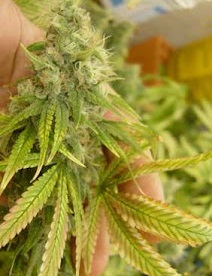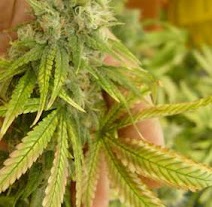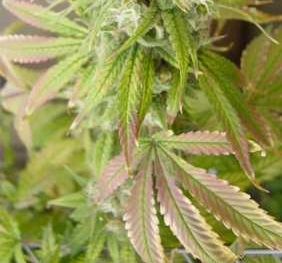
Molybdenum is responsible for turning nitrates into ammonia, which helps with protein production. This means that molybdenum is an extremely important nutrient.
If your marijuana plant has a molybdenum deficiency, it means it is not receiving an adequate amount of this nutrient.
If there is a surplus of molybdenum, your plant probably won’t receive much damage (unlike if humans have too much of it, which is very harmful).
Signs of a molybdenum deficiency
A lack of molybdenum is so rare that for generations it wasn’t even identified as a mineral required by many plants. It almost always is present in low but consistent amounts.
If your plant has a molybdenum deficiency, its leaves located towards the middle are going to start yellowing. This will gradually migrate to the shoot and young leaves – they will begin twisting and curling.
Eventually, the leaves will become pale and look like they have been burnt. Growing will slow down and/or be abnormal. Older leaves will start showing signs of the condition when their margins are rolling, their growth is slowing, and the tips are curling in and turning red.
Often people mistake a molybdenum deficiency for a nitrogen deficiency. The key to distinguishing between the two is noticing where the condition starts. With a nitrogen deficiency, the changes will begin at the base of the plant; a molybdenum deficiency, on the other hand, begins in the middle of the plant and moves upward.
When your plant has too much molybdenum, on the other hand, it could be mistaken for a lack of iron or copper. Not sure if your plants have a molybdenum deficiency? Read the article Nutrient deficiencies in marijuana plants for a list with pictures of all deficiencies.
How to fix a molybdenum deficiency
You can prevent a molybdenum deficiency by using something like Marijuana Booster or a foliar spray made of fertilizers that can be dissolved in water. You can also make sure your plants aren’t over-fertilized by just making a mixture with hydroponic micronutrients, which can be applied via the soil or directly to the plant with a foliar spray.
You can also avoid a molybdenum deficiency by paying attention to the sulfur and phosphorous content – usually it is correlated with a lack of molybdenum.
Like other deficiencies, a molybdenum deficiency is often caused by the pH level. If the pH value is low near the roots, there is a higher chance of your plant having trouble absorbing molybdenum. Therefore, it is crucial that you monitor (or fix) the pH level of the soil that is nearest to your marijuana plants’ roots. Read the article How to measure the ph of your soil to learn how.
If your system is based in soil, the pH level should be between 6.0 and 7.0 in order to best absorb molybdenum. Many growers even avoid pH levels below 6.5 if they think a lack of molybdenum might be the problem. If you are using a hydroponics system, make sure the pH range is between 5.5 and 6.5.
To restore the pH to the optimum level, flush the entire system through with fresh water of the desired pH level, after first mixing in nutrients that work well with marijuana and include molybdenum. This should be enough to restore the balance and remove any potential nutrient salts that were present and blocking your plant’s roots from absorbing molybdenum.
List of marijuana plant symptoms
Leaf Color:
– Older leaves located towards the base start to yellow
– Mottled, spotted leaves
– Discoloration of leaf edges: orange, red, or pink in color around edges
– Discoloration that moves towards the middle of leaves
– Abnormal coloring that starts at the leaf’s center
When the problem does go away, you should see the physical symptoms starting to improve within one week. Don’t expect the already damaged leaves to recover or go back to their normal green color – focus on new growths to really see how your plant is doing.


0 Comment:
Post a Comment